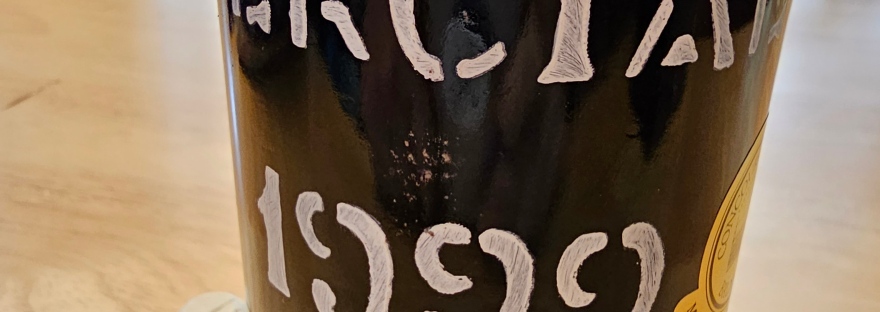The Founding Fathers and Voting with Their Wallets
As Mandy heads out to Boston (make sure to check out the Dewey, Cheatem, and Howe law offices in Cambridge) for a quick Mandy Connell listener trip, she has asked me to provide a little history on the beers the Founding Fathers enjoyed (and I couldn’t resist including their wine of choice as well since it was what was used to toast the Declaration of Independence and was present at the first three presidential inaugurations.)
When first considering what the Founders of our nation may have enjoyed in their local tavern, take into account what the first English colonists brought to the New World: beer. Despite their Puritanical views on other moral and societal behaviors, the Pilgrims were, after all, Englishmen, and as such, according to Stanley Baron’s “Brewed in America: The History of Beer and Ale in the United States,” beer was their beverage of choice, with some historians even declaring that the Pilgrims brought more beer on the Mayflower than water (https://www.phillyvoice.com/celebrate-fourth-way-founding-fathers-did-beer/).
It certainly makes sense. The brewing process typically eliminated much of the water impurities that plagued water supplies in Europe and the rest of the world which is why beer, wine, and alcohol has been found throughout most civilizations (and archeological ruins) and thus came to be understood to be healthier than the local actual watering holes those early colonists would have used.
The actual medicinal use of beer should also not be overlooked. Most healers believed, even during the Civil War, that beer provided a defense against deadly scurvy, especially beers brewed from spruce or pine trees, so beer was always found on ships crossing the Atlantic to the New World.
I often refer to beer as “liquid bread,” because of the carbohydrate content (a friend of mine always called it “a porkchop in a can”) and the fact that like bread, beer loves me and never wants to leave me (a minute on my lips, forever on my hips.) The vitamin content (what many of us lack even today, B vitamins in particular) and carbs were necessary for the hard work of sailing the ocean blue, thus most sailors were rationed almost a gallon of beer per day. Given the likelihood of water going stagnant before alcohol went bad, it is easy to see why those early pioneers opted for a little (okay, a lot) of the Baldwin’s Sisters’ “recipe” to keep the belly warm and the scurvy away.
So, what kind of beer would we have found in colonial America? Not what we consume today! Lower in alcohol, likely watered down, many of the beers I have found in my research that were favored by the likes of Washington and John Adams (we’ll get to his cousin Sam shortly) seem to be in the porter and chocolate stout category. In fact, according to Adam Teeter of vinepair.com, there was a local Philly brew that our first and second presidents loved known as “Mr. Hare’s Porter.” According to Teeter, Washington loved the dark brew so much he would often have it shipped to his headquarters during the war and even attempted to brew it himself once he retired to Mount Vernon. Mr. Hare’s Porter is said to have been the first porter brewed in the New World and quickly supplanted its English competitors. If you dabble in home brewing, here is the recipe for Mr. Hare’s Porter (maybe you’ll have better luck than our first president!)
Now, probably the most famous Founding Father associated with beer is Samuel Adams. Sam Adams, cousin to John, inherited his father’s brewery located in the heart of Bean Town, ironically on King Street (Sam was quite the rabble rouser among the early Revolutionaries and is often considered the founder of the Sons of Liberty, who famously dumped tea into the harbor. Sam is credited with leading that particular party from the Green Dragon Tavern.)
If you are joining Mandy in Boston over Labor Day weekend, do try and check out the Green Dragon (it has since moved after the original building burned down in the mid 19th century) or another famous Boston pub, the Bell in Hand Tavern. Honored with being the nation’s oldest continuously operating tavern, this bar was founded in 1795 by the town crier, Jimmy Wilson, who famously reported the Boston Tea Party and signing of the Declaration of Independance. If you happen to be near the Bunker Hill Monument on Pleasant Street in Charlestown, pop into the Warren Tavern, which has famously hosted Ben Franklin, Paul Revere, and George Washington. I recommend trying their chowder or clam roll with a pint of Harpoon “American Flyer” Lager or the Devil’s Purse “Handline Kolsch.” If you want to drink like a Founding Father, you could also order a Porter style beer or my favorite choice: Madeira.
One thing the beers (and wines) consumed by those members of the Continental Congress had in common were the definite fact they were not English nor, in the case of Madeira, taxed by the Crown. In a time where one could not shout their political leaning with their emojis or yard signs, gentlemen visiting their local tavern certainly declared their loyalties with their beverage orders.
Support the Crown and its divine role in England’s colonies? Declare yourself a Tory and order a glass of port. Believe Mad King George was the devil out to suppress your rights as an Englishman? Order a Madeira wine or Mr. Hare’s Porter.
So, why was Madeira so popular with the Revolutionaries? Well, in classic American style, Madeira was the first tax loophole exploited by the men crying foul at the Crown’s attempts to levy greater and greater taxes on the colonies without so much as a “by your leave.” According to Stacy Slinkard of decanter.com, the reviled Stamp Act actually excluded the Portuguese island of the coast of Morrocco. And despite Portugal’s alliance with England, it was the first (and specifically, the island of Madeira) to recognize America’s independence. According to atlasobscura.com, famous signer of the Declaration of Independence, John Hancock, basically gave the Crown his version of the middle finger by placing two casks for public consumption, known as “pipes” in Madeira production, in front of his house to celebrate the repeal of the Stamp Act. He was also known to have under reported how many pipes he imported leading to the seizure of his ship (and his attorney, John Adams, brought suit against the Crown over the illegal seizure), another key incident that led to the Revolutionary War (put that in your *pipe* and smoke it, Mad King George!)
The wine itself was better suited for crossing the Atlantic then its more delicate French brethren (although one could still find those wines in the collections of colonists with means.) Wine makers on this tiny island realized that by fortifying the wine with brandy before it departed for the new world , that the constant rolling caused by the oceanic crossing in combination with the extreme heat the wine was exposed to both on the deck and within the holds, resulted in a delicious and smooth option for all of the colonies (each region had its own preference for their Madeiras which the wine makers were happy to oblige.) The modern method of creating this known as estufagem where the wine is heated quickly and essentially cooked to create the caramel notes often associated with this fortified wine. There is a slower version of this technique, known as canteiro, where the pipes are essentially left out in warm rooms or under Madeira’s sunny sky.
Thomas Jefferson so loved Madeira that he insisted that the signers of the Declaration of the Independence toast with the fortified wine, yet one more way to send the message that the colonies had truly and completely dissolved their connections to the King. Madeira was the leading beverage of choice when the Constitution was ratified, when Washington, Adams, and Jefferson were inaugurated, when Francis Scott Key wrote the “Star Spangled Banner,” and when Jefferson made The Louisiana Purchase.
Now, I had planned to bring in a Dry 1999 Sercial Madeira for Mandy to taste on Foodie Friday since it is the driest of all the Madeiras on 25 August but she has to go have fun with the Steamboat Institute in Beaver Creek, so our Madeira tasting will have to wait for another time. But if you are looking for a wonderful fortified wine to sip (I plan to enjoy this 1999 one on a crisp fall day watching some football), I would consider a Bual Madeira if you prefer sweeter (or Malmsey if you want it really sweet) or Verhelho if you prefer dry. Pair it with some blue or stinky cheeses or macaron cookies.
Speaking of football, I plan to bring in some wines to pair with potato chips and other football foods for September. Drop me a line here or shoot me an email if you have a favorite football food you’d like me to suggest a wine pairing for or join me on 9 September for my latest classes on Burgundy wine at The Wine Gallery.


